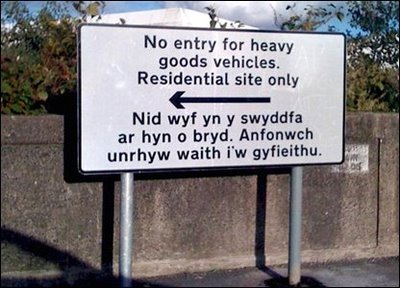Repetition blinds us to just how odd certain rituals of tradition are. Like how it seems perfectly normal that every December we chop down millions of small trees, decorate them with electric lights and glass balls, and display them prominently in our homes.
Archive for the ‘Miscellaneous’ Category
 Tradition
Tradition
18 Dec 2008 11:25 by Rick
 Apple cancels Christmas
Apple cancels Christmas
17 Dec 2008 11:39 by Rick
 Anyone for Tennis
Anyone for Tennis
4 Dec 2008 14:59 by Rick
A colleague was thinking of joining Henleaze Lawn Tennis Club but is not so sure after reading about some of their activities.
Since 1994 we have welcomed members of the Mouilleron Tennis Club on three occasions and visited Mouilleron twice. Mouilleron-le-captif is situated in the Vendée near Roche-sur-Yon not far from the coast.
The visits have been over a long weekend and on both sides we have enjoyed playing tennis, wining and dining and exploring each others regions.
I now need to rescue D & N from ROTFL.
 How great Thou art
How great Thou art
25 Nov 2008 19:40 by Rick
When Christ shall come with shout of acclamation
and take me home – what joy shall fill my heart!
Then shall I bow in humble adoration
and there proclaim, my God, how great Thou art!
Stuart Wesley Keene Hine
For John.
 Flags up
Flags up
24 Nov 2008 23:17 by Rick
 I don’t know why but flag poles flying Union Jacks* seem to have become popular in BS6. Two have appeared in recent months, one in Cotham Grove and one in Redland Road opposite Fernbank. I haven’t observed them enough to see if they are following proper flag etiquette. Up at the company we had a new man unexpectedly made responsible for the three new flag poles outside the executive block and he had no training. So I gave him a copy of some basic rules I found. These things need to be done properly else you will offend someone! Particularly with visitors from the far and middle east.
I don’t know why but flag poles flying Union Jacks* seem to have become popular in BS6. Two have appeared in recent months, one in Cotham Grove and one in Redland Road opposite Fernbank. I haven’t observed them enough to see if they are following proper flag etiquette. Up at the company we had a new man unexpectedly made responsible for the three new flag poles outside the executive block and he had no training. So I gave him a copy of some basic rules I found. These things need to be done properly else you will offend someone! Particularly with visitors from the far and middle east.
* Apparently it is now ok to call it a Jack. Union Flag is seen as pedantic.
 Bread Machine Economics
Bread Machine Economics
23 Nov 2008 20:40 by Rick
Having now run the machine for a while we are getting some idea of the benefits. I made three loaves this weekend—we now eat a lot of bread.
A large wholemeal loaf from our baker costs £1.45. It is nominally a 800g loaf but weighs 780g when purchased. From the supermarket they are £1.11. This is decent bread, not packet cotton-wool.
To make one in the machine using stock (supermarket) flour costs 50p for a large loaf. It is a different shape, but I checked and it weighs 800g after baking. If I were to use organic stone-ground flour from the beanie shop then it would cost 93p. Fancy flours like spelt and rye put up the cost, and white loaves are cheaper.
So it is very good value. The cost is almost entirely the flour; the only other ingredients are 25g margarine, 2tsp sugar, 1.5tsp salt, 1.25tsp dried yeast and the power (0.43Kwh); together they account for about 12p. And there is zero wastage which is better even than hand made home baked bread. Everything that goes into the pot comes out in the loaf and is eaten—no floury hands, bowls or kneading boards.
The bread keeps well and tastes good, not only straight after baking but on to the next days as well. Now that we are confident, I will try experimenting with the ingredients. I want to see what lowering the salt, sugar and fat does to the results as that would make it even healthier. The only complaint we have is that our (Panasonic) machine has a very quiet “done” beeper, especially considering how much noise it makes while running, so we have to keep an eye on the time.
 Daily Bread
Daily Bread
21 Nov 2008 12:23 by Rick
Bread is not what it used to be; or, more particularly, supermarket bread is not the same as was made in the village bakery. This is the claim of many whole-food and healthy living advocates. The common test quoted is to squeeze a small piece of bread between the fingers. factory bread will squash into a glutinous ball and “real” bread will crumble.
I can remember when I was young that it was “steam baking” that was blamed. The implication was that the steam got into the bread and made it soggy. This is rubbish of course. Steam ovens were as dry as any other sort, they just used super-heated steam in pipes to heat them. There would undoubtedly be a difference from an open flame gas oven but not from electric heating.
More recently the Chorleywood manufacturing process (PDF) is blamed. This was invented in 1961 and was rapidly adopted by all large scale manufacturers as it dramatically reduces the production time. Yet an academic report in 1966 (Chamberlain, et. al. PDF) concluded that there was very little nutritional difference in results from previous methods, thought it should be noted that it was comparing against a previous industrial process.
So what goes into bread? The basic ingredients are flour, mostly wheat (100 units), water (55-60 units by weight), yeast (1-2 units) and salt (1-2 units). This doesn’t vary much whether made industrially or domestically. There may be small amounts of other ingredients, fat/oil (1 unit) is used to soften the bread. Acetic acid (vinegar) can be used as a preservative. Commercial bread also includes some proprietary additives which include fungicides (to stop mould) and emulsifiers.
Some additives are out of the control of the bread makers—flour has to contain certain minerals and vitamins by law and these have to be boosted with flour improvers if not naturally present, which is always the case except for wholemeal flour. This is also true for flour bought for home baking, whatever the source.
So what difference does the Chorleywood process make. It uses about double the yeast because it has to act faster. It uses hard (hydrogenated or fractionated) fat which is high in chloresterol and a very small amount of Ascorbic acid (Vitamin C) is added to aid the release of gluten. The speed of the process may also retain a higher moisture content before baking but it won’t be huge. I suspect that any other differences when compared to artisan bread are more down to the quality of the flour and industrialisation rather than the process.
 Are you being served?
Are you being served?
16 Nov 2008 08:20 by Rick
Whilst buying a mattress yesterday, we were chatting to the assistant and realised how many of the old independent department stores had vanished from Bristol since we have been here. These are the ones that I can remember…
- Jolly’s on Whiteladies Road—I don’t remember using this one much and it closed soon after we came here. Part of the premises is now occupied by Maskreys furniture shop.
- Taylors on Queens Road—A smaller one. I think it was taken over by Debenhams who soon closed it. Habitat who were on the Triangle moved here and it is still going.
- Maggs on Queens Road—This one was a little down market and we used it a lot. Members of the family used to be prominent on the city council but it virtually closed in the late ’70s just leaving a basement hardware store and then even that went. Now there are a row of separate shops.
- Next door was Brights, the posh neighbour—We used this one quite a bit as well and there was a hotel behind, run by the same family, which parents used when coming up for graduation. It closed or was taken over (I am not sure which) by Dingles, a branch of House of Fraser. They did an huge refit, gutting the insides and rebuilding. There was a terrific fuss when they changed the frontage and added funny little cupola arches. Later they dropped the independent name and finally moved out. Now there is a branch of Borders and some smaller shops on the ground floor but I have no idea what is in the extensive space above.
- Lewis’s on the Horsefair—they had their own bank in the shop which, by the time we knew it, was a subsidiary of Lloyds but retained it’s identity. This was a true city centre department store over 6 floors with a restaurant on the mezzanine. It was taken over/replaced by John Lewis, no previous connection but confusing, before they moved out of town to Cribbs Causeway. Then it was empty for a bit before being taken on by Bentalls of Reading for a short while until House of Fraser moved from Queens Road. Recently they moved on to the brand new Cabot Circus so now it is empty again.
- Next door was and still there is the national chain store, Debenhams.
So now there is only Gardiner Haskins, which is connected to Gardiners of Cirencester and Haskins of Shepton Mallet. It is a sprawling ramshackle place off the beaten track behind Old Market. It always looks like it can’t survive the year out but somehow keeps going. It is staffed by the old school assistants who are also ramshackle and off the track just like Grace Brothers and you keep expecting John Inman to pop up behind a sofa and say “Are you being served, sir?
 Limit of understanding
Limit of understanding
10 Nov 2008 14:23 by Rick
If

then why isn’t

?
Thanks to a comment on Lifehacker for the idea.
 The perils of Welsh
The perils of Welsh
3 Nov 2008 11:08 by Rick
This came from the BBC but pointed out to me by Fred Langa.

I could just leave it there but those not speaking Welsh would never get the joke. What the second part actually says is…
I am not in the office at the moment. Please send any work to be translated.






 Webmaster
Webmaster